 Richard Linklater’s newest film Everybody Wants Some!! has been advertised as a “spiritual sequel” to his 1993 film Dazed and Confused. However, it was clear that revisiting the 1970s high school and graduation is not what this film is about.
Richard Linklater’s newest film Everybody Wants Some!! has been advertised as a “spiritual sequel” to his 1993 film Dazed and Confused. However, it was clear that revisiting the 1970s high school and graduation is not what this film is about.
“We’re making our own movie. It’s just tonally very similar,” said Glen Powell, who plays the smooth-talking Finnegan. “If you liked Dazed and Confused you’re going to like this movie.”
Powell, along with Wyatt Russell, Quinton Johnson and Forrest Vickery sat down for a panel interview and shared what it was like working with Linklater and bringing 1980 to life.
The film follows the antics of Southeast Texas State college baseball players in the days leading up to the first day of class. Experienced mainly through the eyes of Jake (Blake Jenner), the frat-mosphere of the team house is filled jock characters that fit the stereotype of dumb-college boys obsessed with drinking, sex and having fun. The ground beneath their feet is almost sacred as sports players rule the schoolyard.
On the surface, the film comes across as another “dumb bro flick.” But in true Linklater fashion the story shows more depth than meets the eye. Everybody Wants Some!! is story about entering into full manhood during a time of political, economical and social change. Set precisely in September of 1980, three days before classes begin, the film straddles the end of the disco-era with one foot firmly in “the future.” Tastes in fashion and music was changing. But the genius behind setting is Linklater’s precision. He was careful to make sure nothing from the later years showed up. That precision, coupled with a sense of fun and an appreciation for the human side of storytelling, was what the cast admired.
“Rick is like a time machine. He took us back there,” Johnson said. “He was like, ‘Oh this song is coming out around this time in April; it was playing on the radio three times a week. We wore only these materials. Those materials didn’t come in until ’81.’ He was just so smart about everything that was the time period.”
Powell added that the cast affectionately named Linklater “Rick-i-pedia.” His knowledge about the era, and 1980 specifically was mind-blowing.
One of the most entertaining moments of the entire film was when the boys were driving to campus with the windows rolled down singing Rapper’s Delight.
“Rick talked about that song has now become a joke. He’s like, ‘That’s an awesome song…That was the coolest song of the time.’” Powell said.
Moments like that shake off the campiness that the 1980s have garnered and give it some dignity, all while still being a hoot to watch. For those who were college aged during that time, the film is certain to resurrect some nostalgic feeling; and for those who were still drooling in their diapers at the time, the film offers a glimpse behind the curtain.
“It was a really, really fun, exciting period. I think that’s why Rick wants to revisit it. I think that’s why there’s so much nostalgia for the era. It was truly great” Powell said.
The film is hits very close to home for Linklater. Not only did he attend college during the ’80s, he played baseball as well. Jake is arguably a foil for Linklater himself.
“It’s pretty autobiographical,” he said in the film’s press release. “Looking back, I realize it was a fun time to be in college, not only personally, but it was an interesting cultural moment.”
Everybody Wants Some!! marries together Linklater’s nostalgia of his youth and love of sports with his artistic sensibilities, into a film that will strike a cord in many moviegoers.
“Rick truly is an intellectual but he’s jock, and you forget about that because he’s made so many of these thinky movies over time. And then you talk to him about sports and you’re like, ‘Oh shoot! He’s Rick-i-pedia with sports as well!’ He truly understands the game and he understands competition and the idea of at a certain point in sports you’re going to have to leave that dream behind,” Powell said.
Although focused on college baseball, a good portion of the film is out on the dance floor rather than the diamond. There’s are various scenes that show how the music scene was changing—and along with that, dancing styles. In the ’70s and ’80s dancing was as much a part of the college sports scene as playing. Back then everybody danced. Powell said that nowadays, there’s a feeling that people are “too cool to dance,” but in 1980 it was just a fun time.
Everyone got into the scene.
“We would go in every morning and we’d do two hours of baseball and two hours of dance rehearsals,” said Vickery, who was also making his film debut. “We’d have to do the Cotton-Eyed Joe—which I never picked up; two-stepping, which I say I was ok at; and then the Saturday Night Fever dance is something we had to learn.”
The boys show off their moves starting at a disco club and ending up at an underground punk-rock concert.
“[Linklater] said athletes when you went out you took over, you danced, and you ran the dance floor,” Powell said.
You don’t see that much today and, according to Russell, here’s a feeling that sports players have a brand to protect; athletes can’t be too outspoken or too political now. Turn on any game or ESPEN and you’ll see carefully phrased answers to questions and most athletes and coaches dodging heady questions that stray outside of their sport. But back in the ’80s there was almost a license to be candid.
The heart of the film was the relationships between the young men. The older classmen take the younger under their wing and impart their “wisdom.” Whether it be on how to pick up chicks, managed classes or realizing that they’re on a whole new playing field, the interactions are authentic, heartwarming, and humorous.
Perhaps none are as enlightened, or perhaps high, as Willoughby. Played by Russell, the cannabis-mellowed Californian injected some perspective into the young teammates. He said the odds of them actually making it to the majors are slim and that there is more to life beyond baseball.
Russell felt a true kinship with his character as he had similar aspirations of becoming a professional hockey player that were later dashed. His personal experience lent itself to the character of Willoughby.
“If you’re any good and you got a shot at becoming something—you have to put these horse blinders on at like 15, 16, 17, because that’s when things get real. If you aren’t able to at some point get those horse blinders off then you’re missing the point, in my opinion,” he said.
“So, when we were talking about that scene, that came up for me. I thought it would be fun thing to impart some of the stuff I learned in hockey and my life in sports on Jake… he [Willoughby] looks back on it and goes, ‘Let me just let you in on something, because this is what life’s about because you’re probably not going to go play.’”
That realness is a trademark Linklater style. In his films, there’s a sensation of “I know some one just like that,” and in Everybody Wants Some!! it’s no different. To foster the genuine companionship and frat-like comradery, Linklater brought the cast to his ranch out in Texas prior to shooting.
“He was like a camp counselor in a way,” Russell said. “He’d be like, ‘Alright, now you gotta go swimming. You gotta go play ping-pong, you gotta go do this.’”
By giving the cast room to be creative and have fun allowed them to build true relationships with each other, which translated really well on screen. As Russell put it, Linklater is interested in casting people, not actors.
“It was the best master class I could have taken,” said Johnson, who was still a student at University of Texas when he auditioned for the role of Dale. “I was getting ready to take a film course that fall semester and I’m glad I did this film instead of taking that film course.”
Everybody Wants Some!! is a charming, at times ridiculous, foray into the recent past. Linklater reveals a truth about that time—like taking a polaroid he captured the zeitgeist of the moment that’s been lost in the barrage of big hair, shoulder pads, and spandex. As Powell said, Linklater “sees the truth in life.” And that’s what we go to his films to see—to experience a moment in time.
- Kaely Monahan is a graduate of City University London and the creator of Popcorn Fan Film Reviews. Follow her @PopcornFans and @KaelyMonahan.
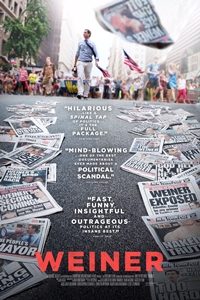 A politician exposed:
Behind the award winning Weiner.
A politician exposed:
Behind the award winning Weiner. 
 Make casual plans to check out ‘Maggie’s Plan’
Make casual plans to check out ‘Maggie’s Plan’
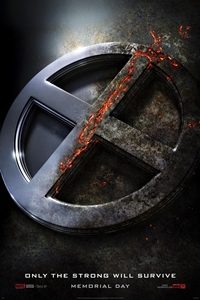 X-Men: Apocalypse
X-Men: Apocalypse
 ‘The Nice Guys’ takes the buddy-cop genre to another level
By Kaely Monahan
‘The Nice Guys’ takes the buddy-cop genre to another level
By Kaely Monahan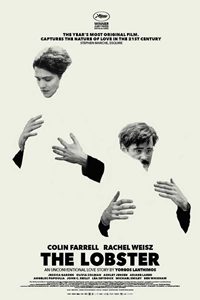 Reach out and grab ‘The Lobster’, the best film of 2016 (so far)
Reach out and grab ‘The Lobster’, the best film of 2016 (so far)
 ‘Neighbors 2: Sorority Rising’ hosts a less funny, more vulgar block party
‘Neighbors 2: Sorority Rising’ hosts a less funny, more vulgar block party
 ‘A Bigger Splash’ does not reach its thirsty audience
‘A Bigger Splash’ does not reach its thirsty audience
 “Patel plus Irons equals a gem in ‘The Man Who Knew Infinity’”
“Patel plus Irons equals a gem in ‘The Man Who Knew Infinity’”
 Captain America: Civil War
Captain America: Civil War
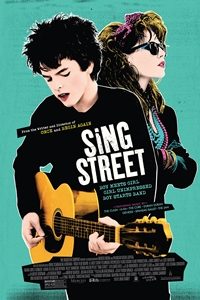 “’Sing Street’ is a wonderful ‘80s music, coming-of-age road trip”
“’Sing Street’ is a wonderful ‘80s music, coming-of-age road trip”
 “Sarandon extends a warm invitation to ‘The Meddler’”
“Sarandon extends a warm invitation to ‘The Meddler’”
 “’Papa: Hemingway in Cuba’ is important but not quite a cinematic page-turner”
“’Papa: Hemingway in Cuba’ is important but not quite a cinematic page-turner”
 You don’t have to be a crazy cat lady to enjoy Keanu
By Kaely Monahan
You don’t have to be a crazy cat lady to enjoy Keanu
By Kaely Monahan Green Room
Green Room
 “Shannon and Spacey deliver a fun history lesson in ‘Elvis & Nixon’”
“Shannon and Spacey deliver a fun history lesson in ‘Elvis & Nixon’”
 Richard Linklater’s newest film Everybody Wants Some!! has been advertised as a “spiritual sequel” to his 1993 film Dazed and Confused. However, it was clear that revisiting the 1970s high school and graduation is not what this film is about.
Richard Linklater’s newest film Everybody Wants Some!! has been advertised as a “spiritual sequel” to his 1993 film Dazed and Confused. However, it was clear that revisiting the 1970s high school and graduation is not what this film is about.
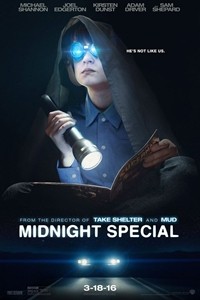 Midnight Special
Midnight Special








